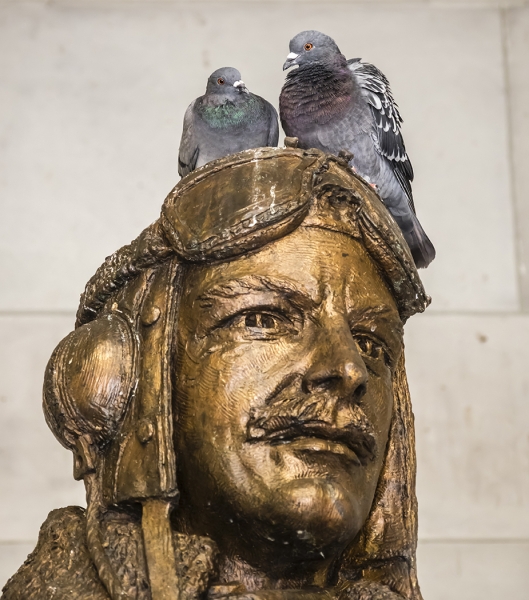The Entry Level category for the Introduced Birds competition comprised only 14 images. As usual I looked at these images in terms of their technical standard and their composition.
In addition, introduced species have an impact on other birds and the environment, which varies considerably from species to species. Some introduced species are highly successful, whereas others remain marginal and limited in their distribution. Some have a particular association with humans and the urban environment. Thus, I also looked to see what the image says about the impact and character of the introduced bird depicted.
Winner: Ostrich, by Graham Gall (Image ID 35917)
I expect that some readers will be surprised that I selected this image over others. However, I found several aspects of this image interesting. Ostriches are typically found in arid or semi-arid environments in their native territory (now confined to Africa), and only small introduced populations are found in limited locations in Australia. The sepia-like tones of this image, and the high key presentation, seem to capture this aspect; dry, dusty, hot, enjoying a sand bath. The bird seems almost part of the sand. I also think that the head portrait works well, providing a more intimate portrait than would be achieved had the photographer tried to capture the whole bird given its size. I think the photographer successfully tried something a bit different here, and given that most Australians will only come into contact with Ostriches in a zoo, the setting seems appropriate.
Highly Commended: Spotted Dove, by Jennifer Carr (Image ID 35925)
In complete contrast to the winner, here the photographer has produced a fairly standard full-bird portrait. However, it has been well executed overall. The overall warm colour, with near identical colours in the background compared to the bird, and soft overall lighting, provide a pleasing intimate feel to the portrait which is in keeping with the nature of the bird and our traditional view of doves. The bird itself is nicely focused, without being over-sharpened, and as a result shows good feather detail and the head and eye are reasonably crisp. Unfortunately the barbed wire is a bit out of character with the overall tone of the image, but it and the post help divide up the background and draw the eye in.
Commended: Common Blackbird, by Jennifer Carr (Image ID 36200)
This image has some obvious issues in relation to composition, but I selected it because provides an interesting portrait of this species. The photograph captures the character of the blackbird quite well, particularly its love for water and relatively cool sheltered environments. The contrast between the strong motion blur of the body, and the sharp head and feet, adds interest, as does the fine spray of water from the bird shaking itself. The yellow/orange beak and eye-ring provide a centre of focus in an otherwise fairly dark image. Unfortunately, for me, the white material at the bottom and the slightly off-centre position of the bird detract from the image compositionally; the latter could be fixed in post processing, but the former is more difficult to deal with whilst still keeping the feet away from the edge of the frame.
Commended: Rock Pigeon, by by Graham Gall (Image ID 35906)
Again, I appreciate that the photographer attempted to present this species in the built environment which is where it is often found, in an interesting way. The birds seem to be having a conversation, on the statue, which is itself an arresting bronze piece that dominates the picture. Pigeons on statues are a very common/stereotypical target for photographers, but the position of the birds and the nature of the statue keep it more interesting than many Instagram photos of this type.










